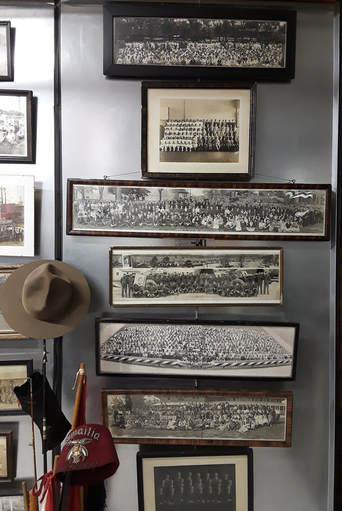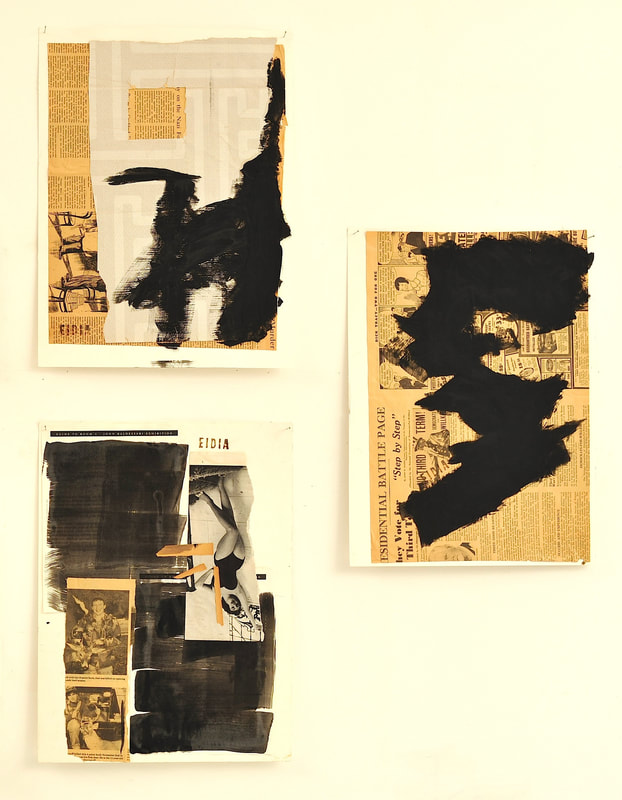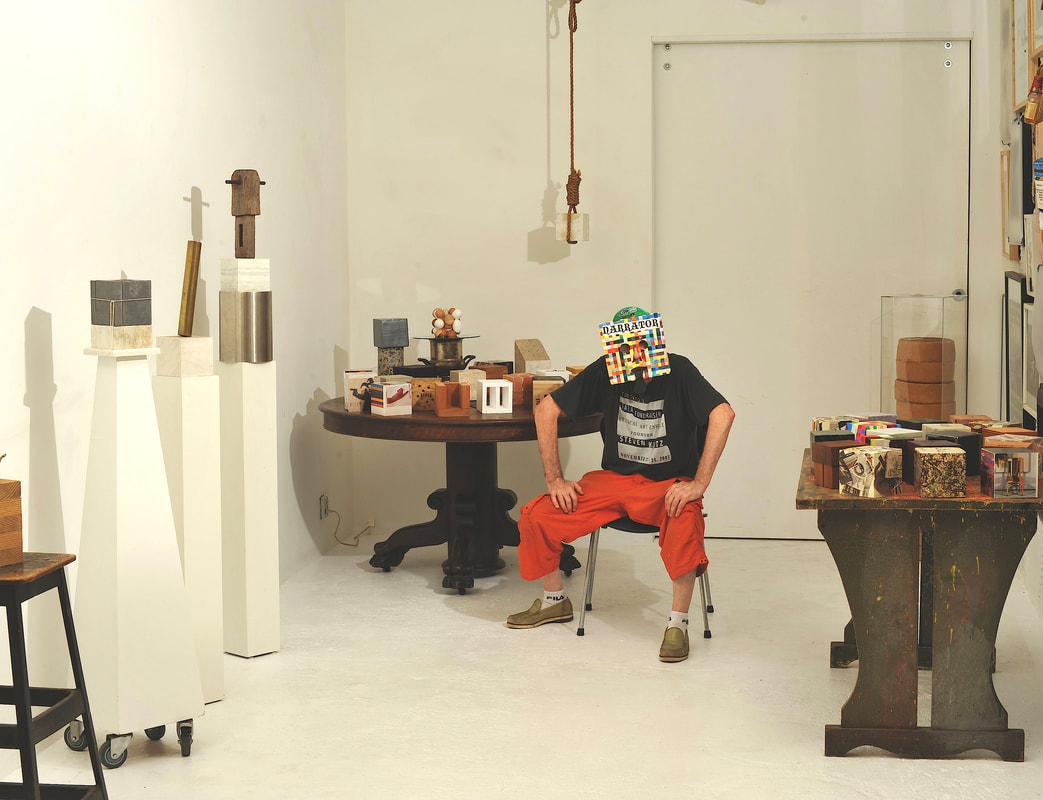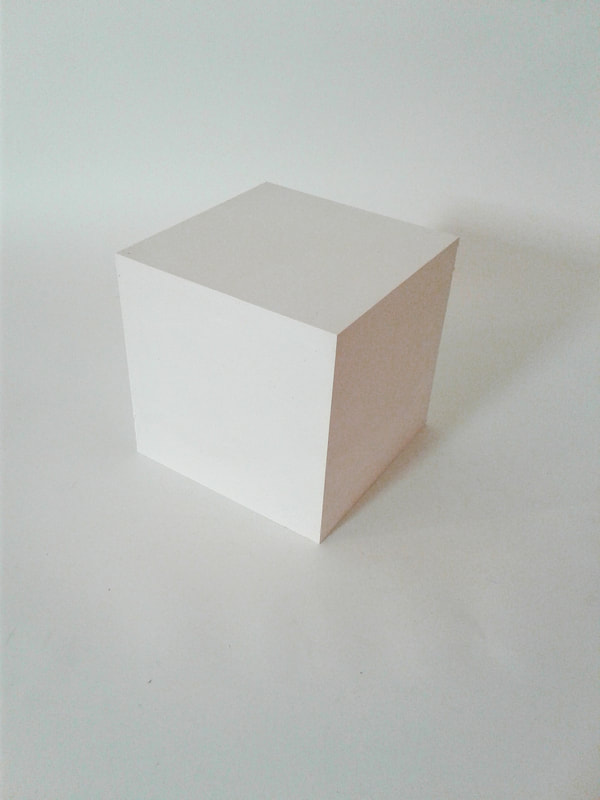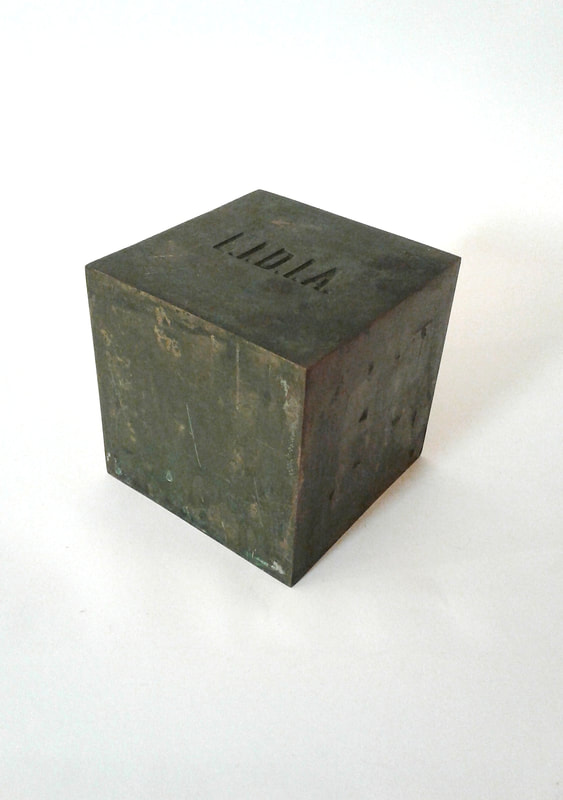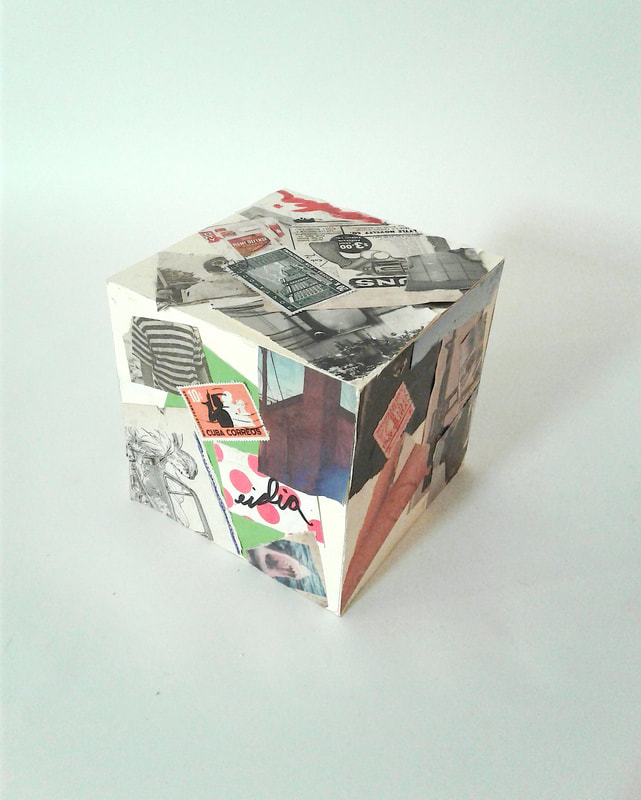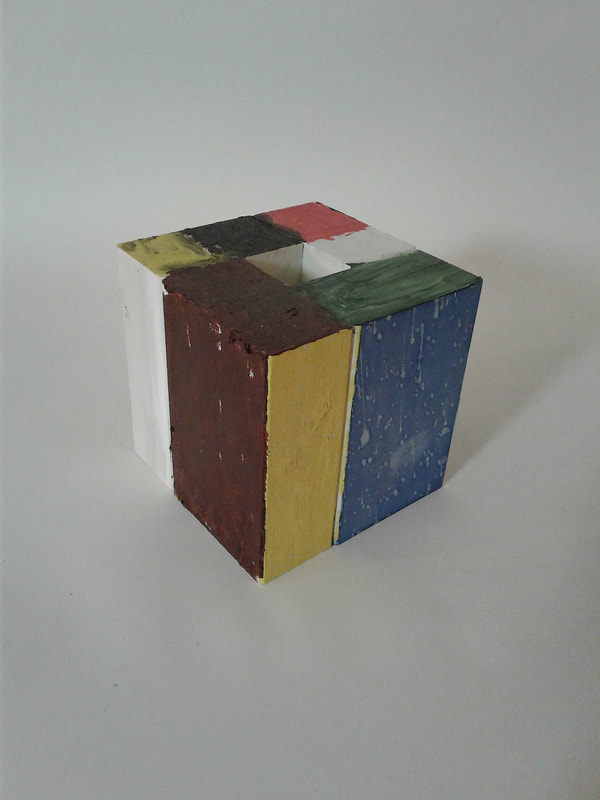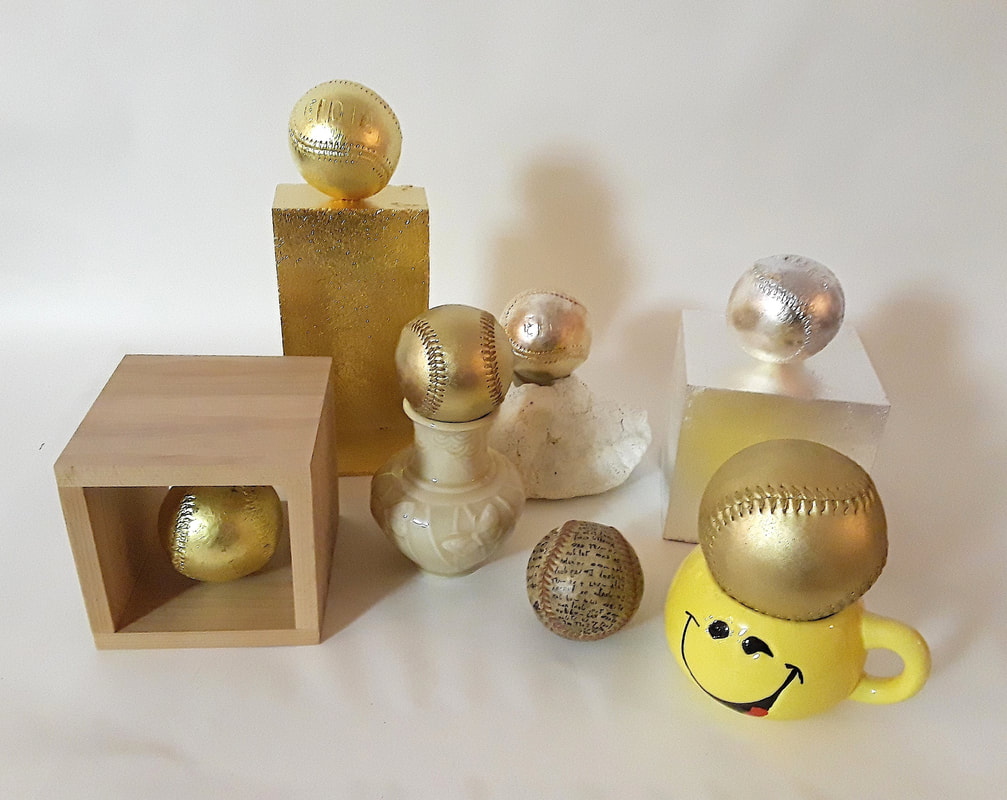Paul Lamarre and Melissa Wolf are artists and filmmakers from New York City who work collaboratively under the name EIDIA (“Everything I Do Is Art.”) Together, they serve as co-executive directors of EIDIA House, a Brooklyn-based meeting place and forum for artists, scholars, poets, writers, architects and others interested in “idée force” the arts as an instrument for positive social change. EIDIA’s practice presents its form through multimedia installations, photography, sculpture, video, painting and aesthetic research. Their endeavors explore the dynamics of art politics, social spaces and the environment. EIDIA works are in numerous private collections, museums, art institutions and in over 200 prominent universities and colleges internationally.
Window Fresh # 1 and # 2 2017
Found objects, 4 solid glass slabs 8” x 11 3/4” x 3/4” displayed on enamel metal shelf 11 1/2” x 36” x 3 3/4”
Found objects, 4 solid glass slabs 8” x 11 3/4” x 3/4” displayed on enamel metal shelf 11 1/2” x 36” x 3 3/4”
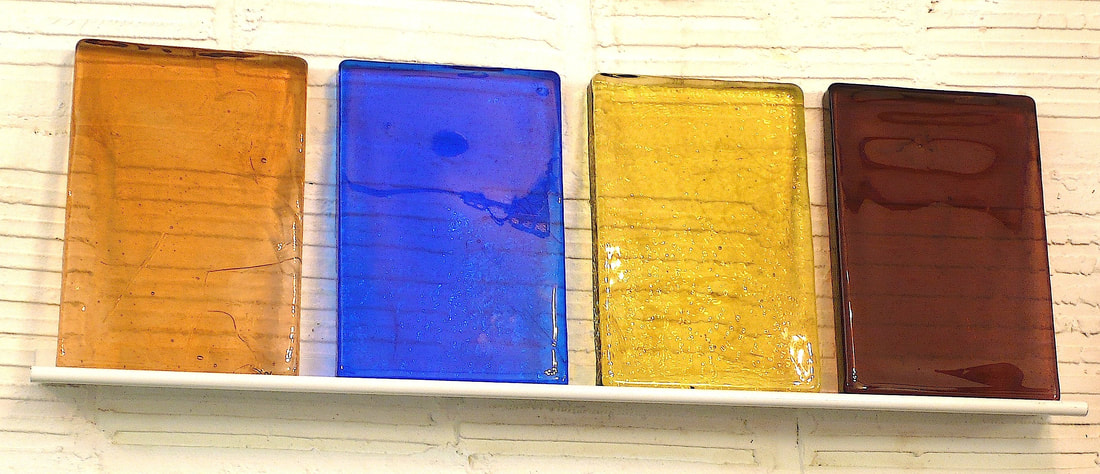
In a nod to Marcel Duchamp’s “Fresh Widow” EIDIA’s “Window Fresh” suggests a 'gaze' through colored glass into a hypothetical brighter future as opposed to Duchamp's darker 'reflection'. EIDIA sees the glass as consistent with positive energy generated by EIDIA House Studio.
The Psychiatrist’s Office American Battle For Abundance 2010-2015
|
A visitor to the psychiatrist’s office sits in the chair, reads the pamphlets, and ponders their failed American Dream. “The Psychiatrist’s Office” is an installation (or play) composed to suggest a darker calculated history to the current cybernetic disruption of common social interactions. Like a warped waiting room out of a Sam Beckett play, a wall of panoramic photographs showing hundreds of people standing and sitting in groups—backdrop a black Naugahyde (faux leather) chair that has on its seat, pamphlets created for the expanding consuming public by Fordian corporations, post World War II—with titles such as: “The Magic of Your Telephone” and “American Battle For Abundance.” As with the organizing of society into groups, and with the invention of Psychiatry, these pamphlet propagandize promoted social networking vis-à-vis mass communications and reinforced social class representational imagery, to coalesce participation in the division of labor. This emblematic “collectivism” in turn is promoted in the name of democracy reflected in the panoramic photos; and where the one true master—CORPORATISM—remains cloaked from view.
|
The Ball Game 2005-present

Like any ball game wherein the players passionately play to win as if they were "gods" seeking to control their universe—using any and all tactics of play—the EIDIA Ball Game is put forward as a symbol of the earth--that in your hand leaves you to decide how you chose to play a god. What is the earth for you as you hold it in your hand? You can play the game in a stupid fashion, or you can choose to be responsibly intelligent, given the earth is a ‘ball’ on which you and future generations depend on to survive. You are the decider. EIDIA’s “Ball Game" is an installation of balls of various histories, traditions, and compositions which are perched on fifty - 5 x5x5 inch custom cut honed finish solid white Carrara marble cubes which are spaced 3 to 10 feet apart on an exhibition floor so the viewer can walk between and perhaps grab a ball and join the game. Four balls are custom cast solid bronze, embossed with the EIDIA logo and with Greek God’s names such as Zeus and Hermes. Visitors to The Ball Game hold the bronze ball in their hand as they stroll between the varied balls on the marble cubes. As gods gazing down at their earth they contemplate what games they will play with their “blue planet.” From from a cat eye marble to a basketball or cricket or ping pong or golf ball, the game is on. It is your play.
Collages 1990-present

EIDIA’s collage / ‘bricolages’ represent a key aspect in the “aesthetic research” of EIDIA’s practice by transforming accumulations-of readymades, if you will, into an aesthetic displacement. These assemblages are montaged images culled from the propaganda organs of the 1950’s -60’s -70’s that served to promote the consumerist ethos as the raison d'etre of American life. The collages plummeting the deeps of the ’collective memory’ contrasting images of revolution, violence, protest and war with the ‘objects of desire’ sex, cars, fashion, fast food and beautiful homes. This work is also influenced by the CUT-UP 's of William Burroughs and Brion Gysin, the Combine paintings of Robert Rauschenberg, the Shadow Boxes of Joseph Cornell and Photomontages by Gilbert and George.
The Collage works are composed on archival rag papers,1986 to the present in varying sizes from 4 x 9 feet to 4 x 5 inches. They are in numerous collections along with other EIDIA and EIDIA House works.
The Collage works are composed on archival rag papers,1986 to the present in varying sizes from 4 x 9 feet to 4 x 5 inches. They are in numerous collections along with other EIDIA and EIDIA House works.
The Cube series, 5 x 5 x 5 inches,1979 to present
|
The EIDIA Cube series are fabricated cubes created (1979 to present) in materials such as bronze, iron, lead, marble, concrete, granite, rubber, Beeswax, various common and exotic woods, gallery announcement cards, plaster, steel, wax, plaster and gold and silver leaf, glass and eggshells.
Launched in 1979, by Lamarre, while living in Chicago, since that time all works have been engraved, heat branded or signed with the acronym EIDIA as an intragal part of the form.(see EIDIA Manifesto). The cube was specifically chosen as a fundamental form meant to “literally” contain an “idea." The EIDIA Cube series is an on going investigation of aesthetic research through the structural form of a 5 inch cube. They are an attempt to 'sum up' and offer a singular containment for heterogeneous experiments, through the collaboration of Wolf and Lamarre—the EIDIA practice. |
EIDIA Cube Brick Ball Hybrids 2018
ROY G BIV impasto paintings 1985-1989

The ROY G BIV impasto paintings are a series of nearly 30 paintings and sculptures ranging in numerous sizes between, 9"x16" and 17" X 7 foot, on wood bases executed by EIDIA and an intern in a tiny art studio in the famous 611 "Cable Building" in SoHo. The pigment formula was invented and developed by Lamarre while being mentored by Jerome Kamrowski the noted New York Abstract Expressionists (and Surrealist) who headed the painting department at the University of Michigan. Kamrowski also had previously mentored the artist Mike Kelley.
The intended style of the work was EIDIA's response to the burgeoning trend in artist run galleries like International with Monument, and Nature Morte know as “Neo-Geo.” This was during the period of the Post-Modernistim in the East Village art scene with artists like, Jeff Koon, Meyer Vasiman, Peter Halley and Mark Dagley. When these artists started to show in commercial galleries the passion and innovation of the movement pretty much petered out. With these works EIDIA mocked the idea of the commodified art trends and comments on how irksome the frivolous the art world is.
The intended style of the work was EIDIA's response to the burgeoning trend in artist run galleries like International with Monument, and Nature Morte know as “Neo-Geo.” This was during the period of the Post-Modernistim in the East Village art scene with artists like, Jeff Koon, Meyer Vasiman, Peter Halley and Mark Dagley. When these artists started to show in commercial galleries the passion and innovation of the movement pretty much petered out. With these works EIDIA mocked the idea of the commodified art trends and comments on how irksome the frivolous the art world is.
© 2021 EIDIA




